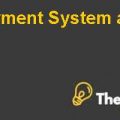Investment Management Process – Portfolio Management
Introduction
This report attempts to analyze the portfolio values, returns, standard deviation etc. by investing in stocks and bonds for two different phases. The two different phases are the training phase and the test phase. Currently the allocation of the funds in equity and the bonds is 50% each. Based upon the range of the model for portfolio management, brand new models have been constructed and their relative risks and returns have been analyzed and then these risks and returns have been compared with the initial returns and risks generated in the initial models for both the training and the test phase.
Technical analysis has also been performed taking 12 month moving average returns for stocks and bonds and lastly based upon the detailed analysis that has been performed, recommendations have been made to the management for optimal allocation of the funds, generate higher return and minimize risk. A number of variables/factors have been manipulated under each of the models to find out the optimal risks and returns under each of the models.All the models could be seen in the excel spreadsheet attached as an appendix to this case.
Portfolio Analysis
The analysis of the basic models have been performed by manipulating and changing the variables/factors by making use of three different portfolio management models. The three models which have been used in this case are the Tactical allocation model, value at risk model and the Fed model for portfolio allocation between equities and bonds. The technical analysis has also been incorporated within these models. The analysis for these models for the training and the testing phase has been performed individually as follows.
Tactical Asset Allocation Model
The goal of the tactical asset management model is to basically improve the risk adjusted returns associated with a passive approach to investment management. Under this model, the management can basically achieve superior returns and minimize the risk associated with the investment and the return is much higher as compared to a passive investment strategy. This is basically a 100% mechanical strategy and a long-term investment strategy for optimal allocation of the assets in a portfolio(Baird, 2009).
Two asset classes have been used in this case in order to in order to allocate the capital and the capital has been allocated on an equal basis with a ratio of 50%/50%. The 10-month simple moving average has been used based upon the monthly returns for the stocks and the bonds and when the new returns have been calculated the older returns have been dropped off. The main base of this model is that if at the end of the month the price of the stock is lesser than the price calculated through SMA, the stock is sold and vice versa.
However, one of the issue with this model is the susceptibility of whipsaws under which the switch within the prices is slowed down and as a result the signals and the price becomes more stable which has also been observed in this case also for the training and the testing phases. However, based upon the allocation of 50% to equity and 50% to bonds, the summary statistics has been computed for the training and the testing phase. It could be seen that the returns have increased significantly and the risk has been minimized. The Sharpe ratio has also increased as a result. The annual turnover and the average equity allocation ratios remain same.............................
This is just a sample partial case solution. Please place the order on the website to order your own originally done case solution.













